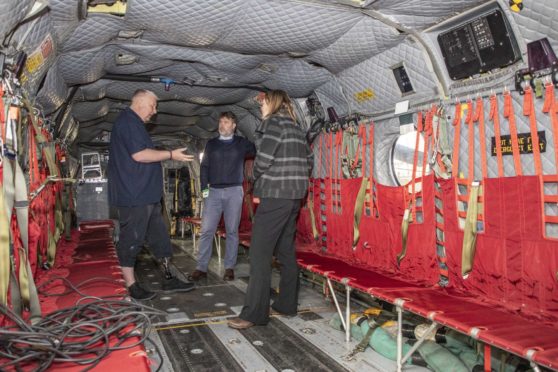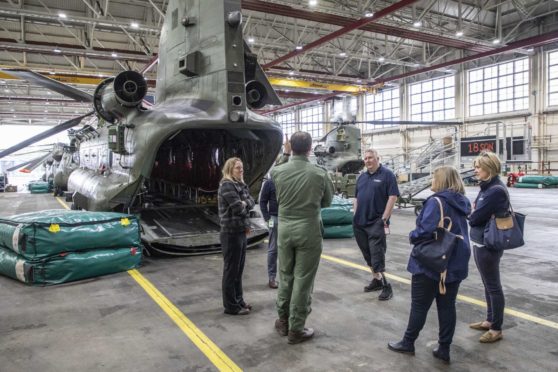A former RAF dog handler who lost his leg after stepping on an Improvised Explosive Device (IED) has been reunited with the Chinook crew who saved his life.
Mick McConnell, 47, was patrolling a farmer’s field in Afghanistan in 2011 with his dog Memphis when he set off an IED.
He was rescued by a Chinook helicopter and spent years in recovery for a shattered left foot.
Despite the rehabilitation efforts, Mr McConnell, from Elgin, later had his foot amputated.
On the 10th anniversary of the explosion, he went back to RAF Odiham in Hampshire to meet the Chinook crew who rescued him, flying him to safety and emergency medical treatment.
He said: “It’s something I’ve been wanting to do for a long time, just say thank you. I was a bundle of nerves in the run up to meeting the crews.
“I wanted to say something so small, but it meant so much to me, to be able to say thank you for what they did for me.
“It was an honour to meet them in person, they have been constantly on my mind since that day. I think about what they did for me, putting their lives at risk.”
He added: “Before I met the crew, I knew nothing about them, I didn’t remember them from that day.
“I have some headcam footage that I’ve seen of my rescue which shows them running out of the aircraft and carrying me back in, but I don’t really remember it. Meeting the crew has put the day into a more ordered fashion for me.”
Mr McConnell said the crew were “adamant they were just doing their job” when they rescued him.
And standing in the hangar with the original Chinook, he noticed a coincidence that “sent shivers down my spine”.
“While we were chatting, the crew pointed out the Chinook in the hangar we were standing in was the one which had rescued me,” he said.
“Then I noticed the tail number of the Chinook. It was Z891 – the last three digits of my service number.
“It sent shivers down my spine, what a coincidence. I had to take a step back and everyone went quiet when they heard.”
Mr McConnell’s rehabilitation has been aided by the Royal Air Force Benevolent Fund, who helped him with a loan to buy a house.
The charity helps pay for practical, financial and emotional support including mobility aids, training for sick or injured people leaving the service and awarding grants to veterans living in supported accommodation.


